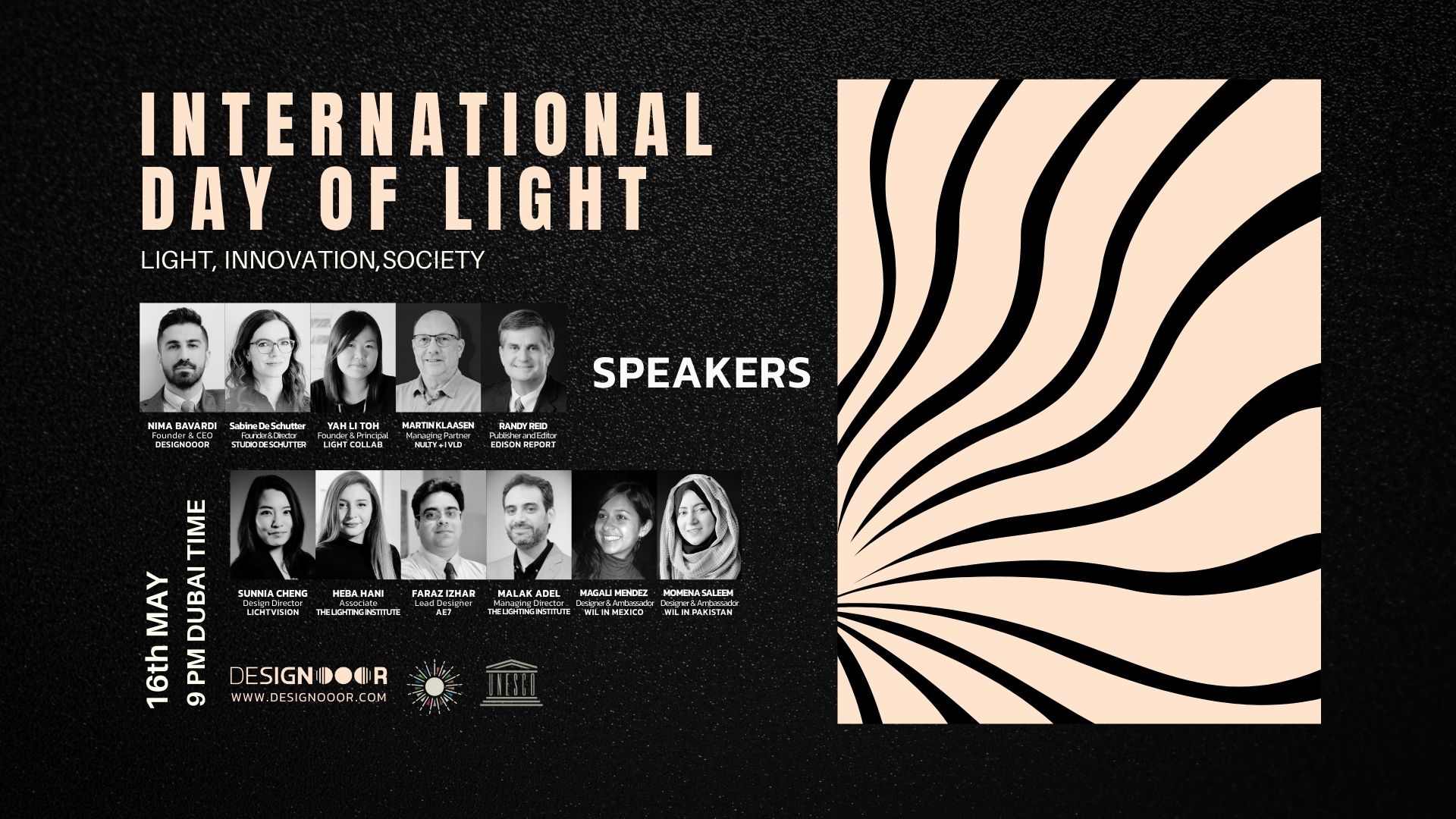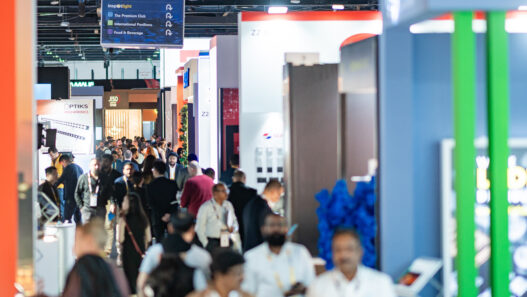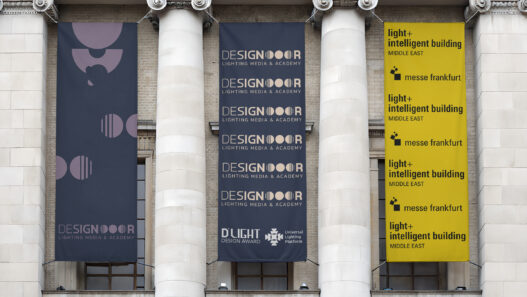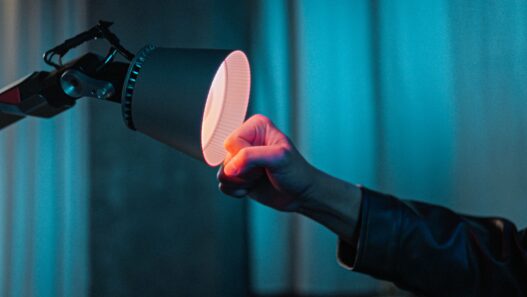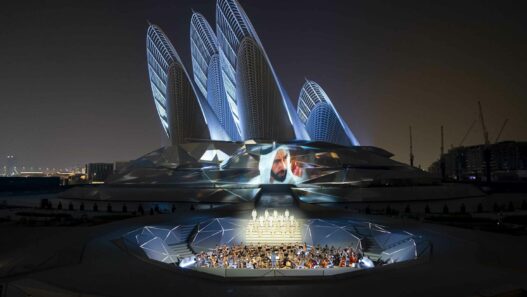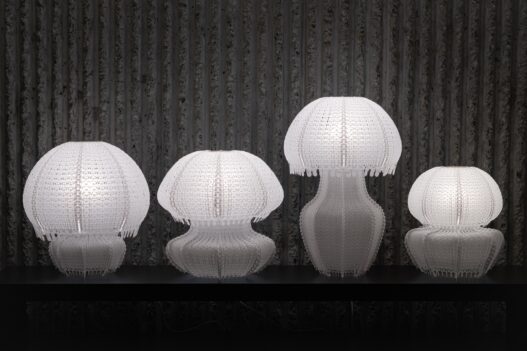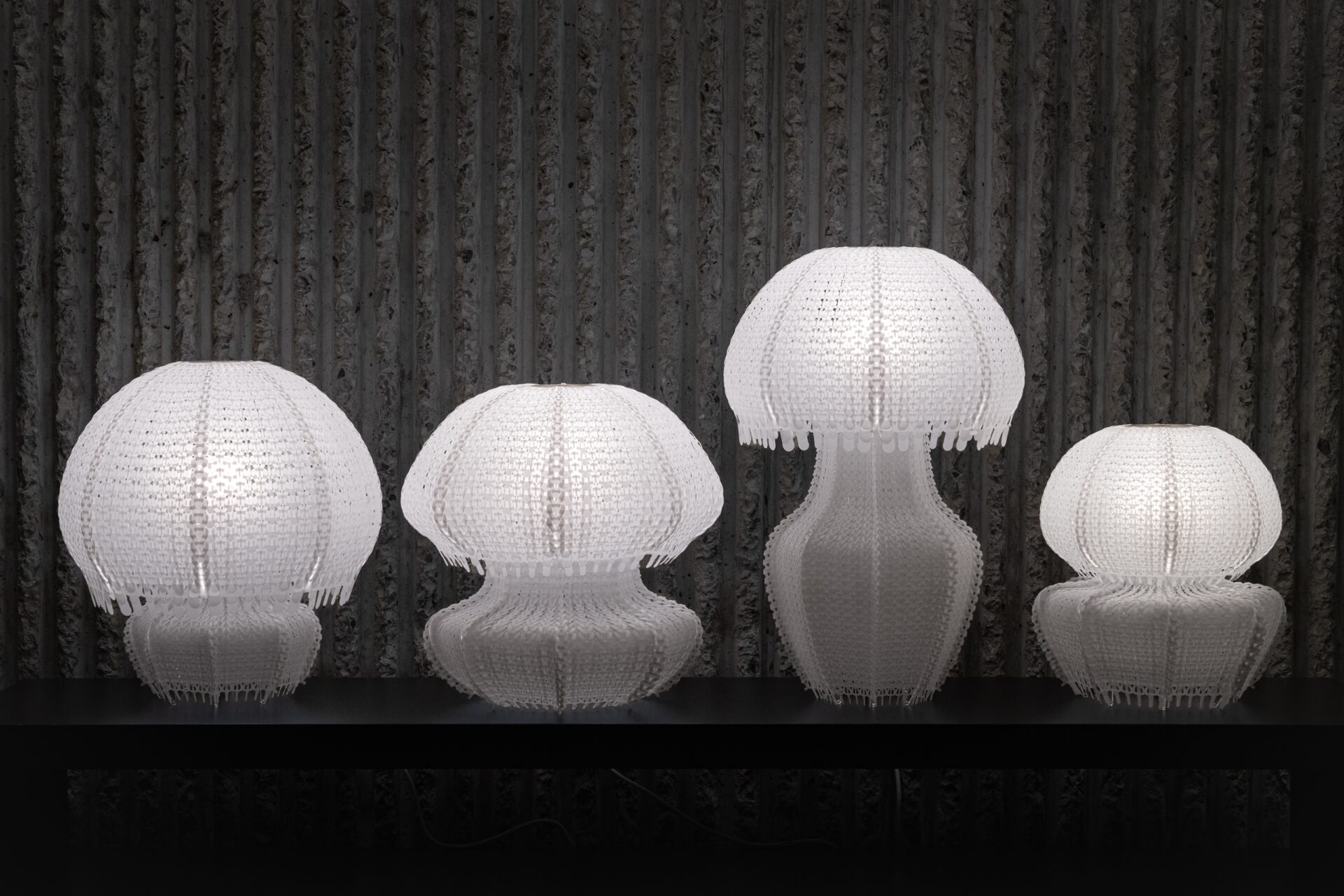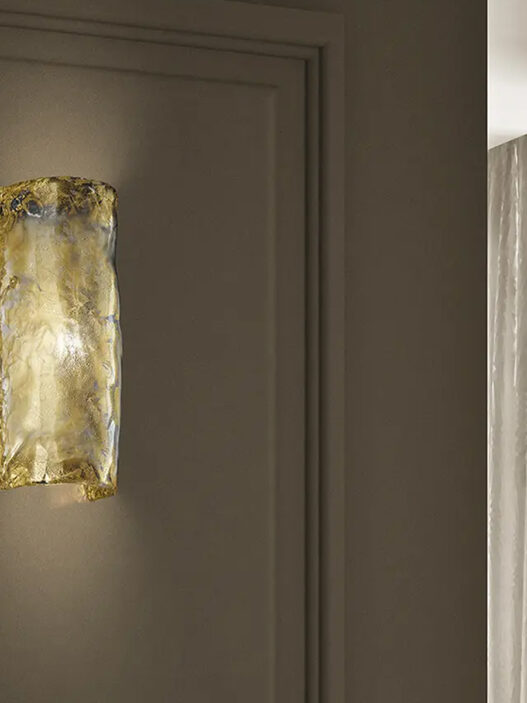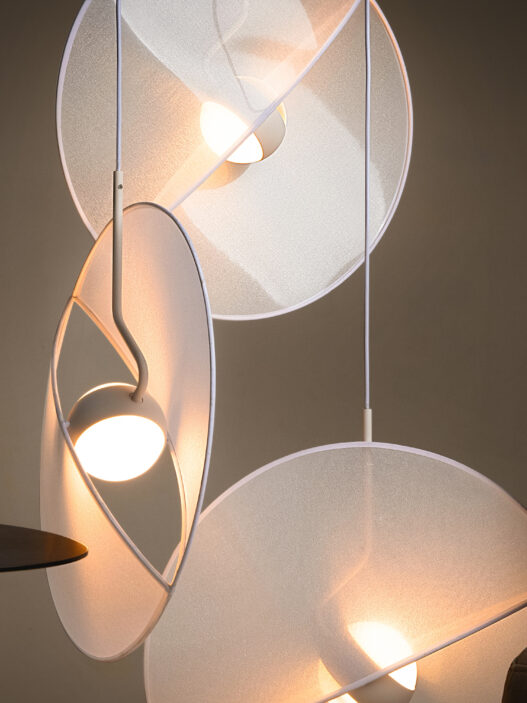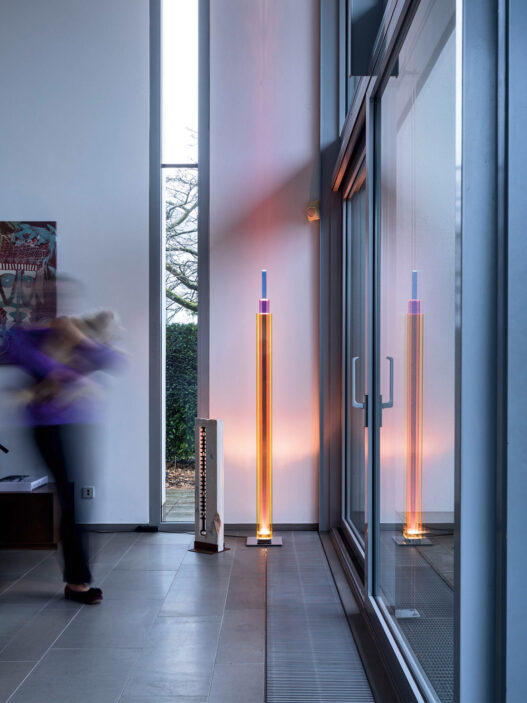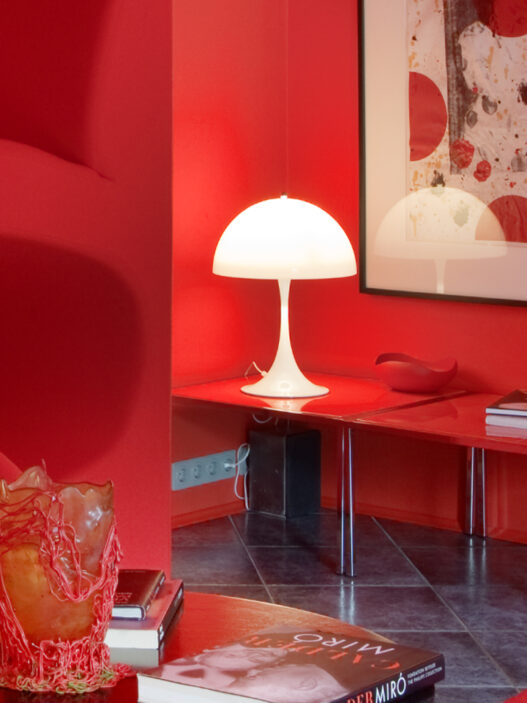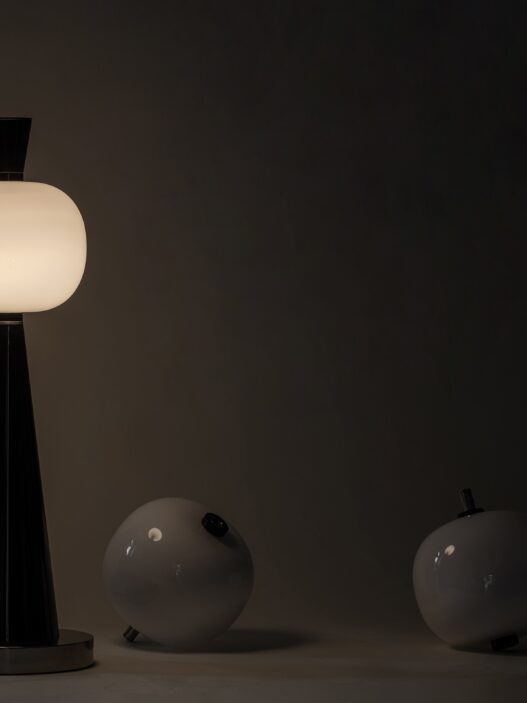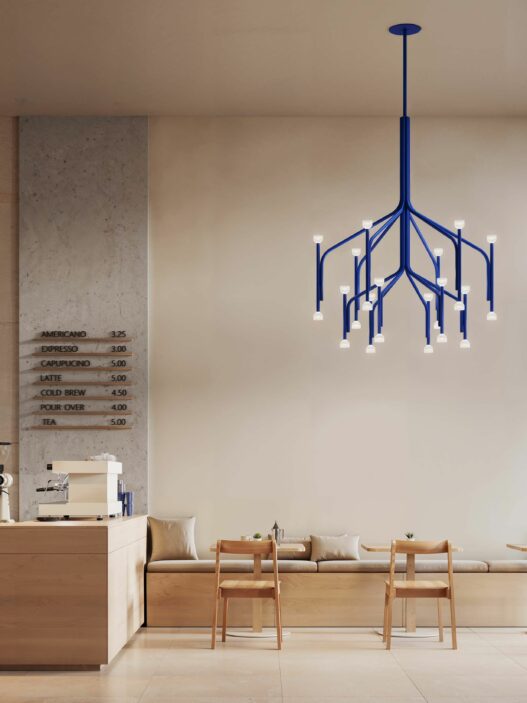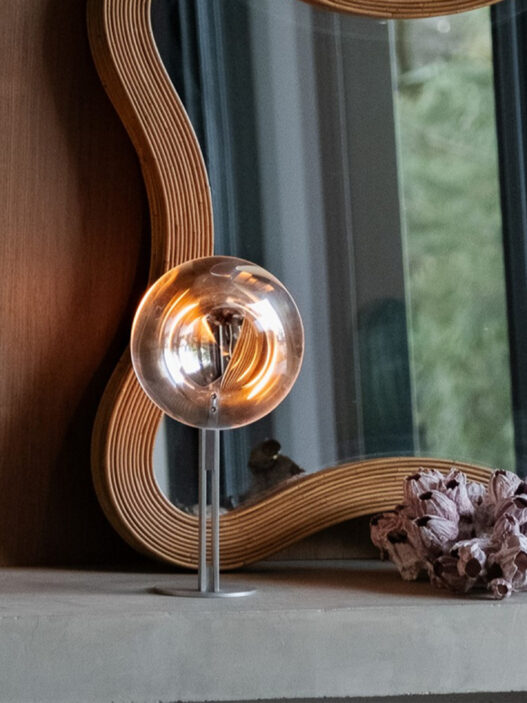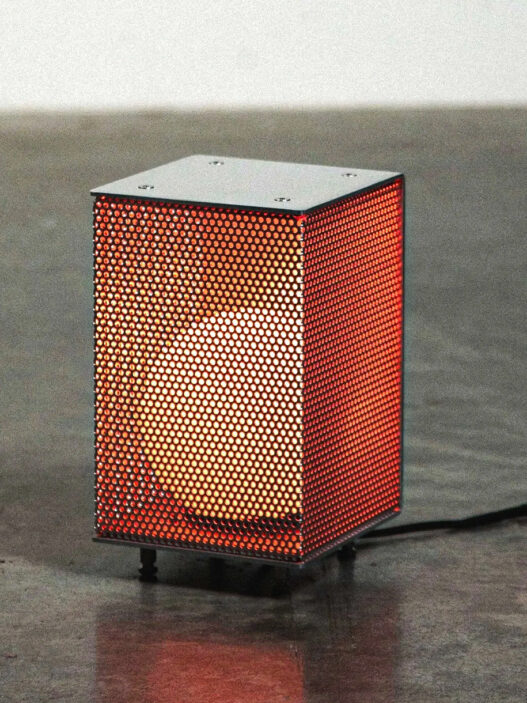Bioluminescent-inspired sustainable light
When I look at Polycycle Illumination, the first impression is that the project succeeds in creating a meaningful connection between narrative and function; a narrative that speaks of the harm caused by plastic and a function that turns light into a medium for retelling that story. At the level of form, the design shows a strong sensitivity to shape and an awareness of materiality. The choice of translucent jellyfish-like silhouettes directly aligns with the project’s environmental message and simultaneously establishes a distinct visual identity. What appears in the images is a combination of dense surface patterns and hollow spaces that, once illuminated, diffuse light gently across the form and transform the material presence of plastic into a luminous memory.
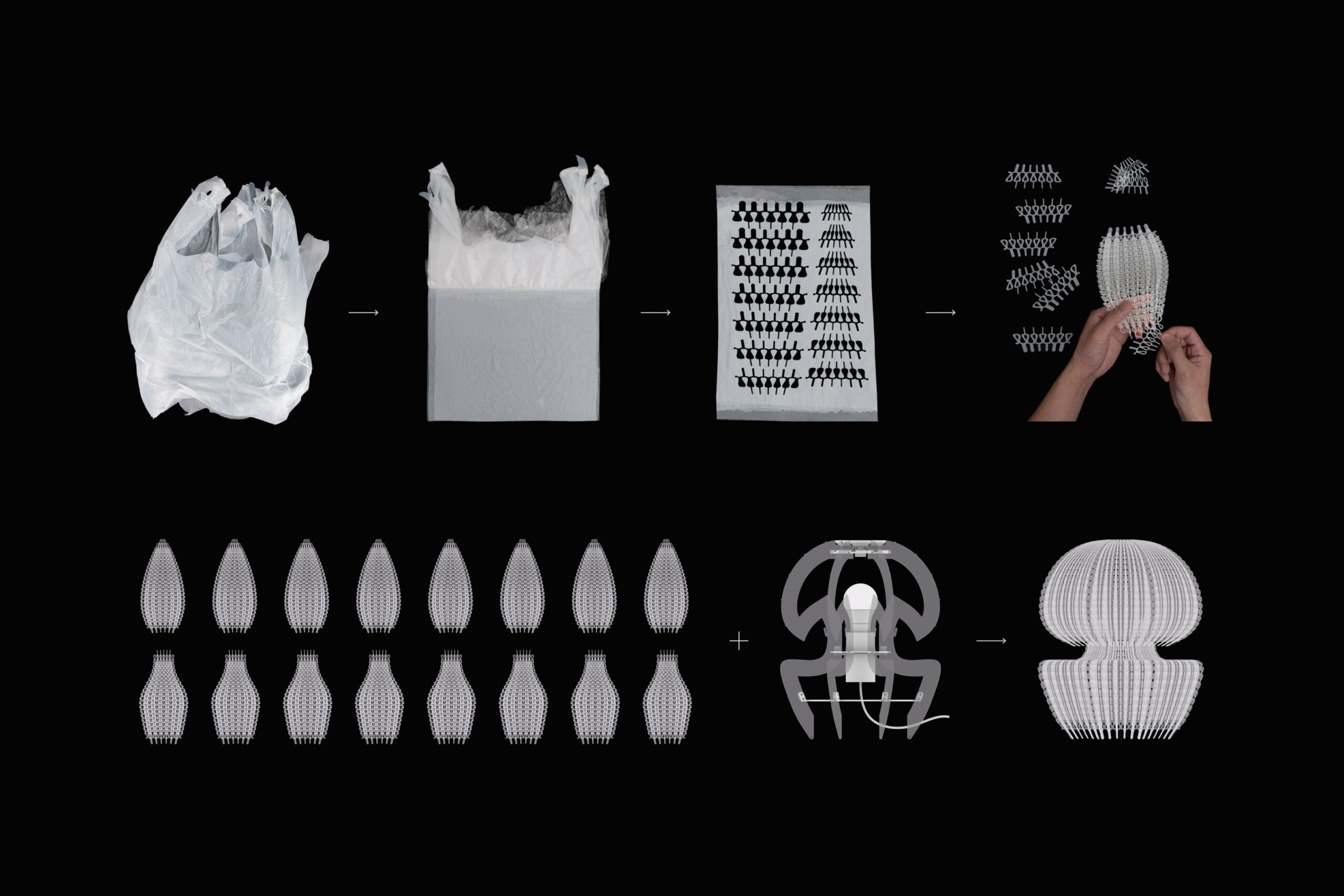
From a material and process perspective, the use of heat-pressed polyethylene bag sheets is a defensible choice in terms of recycling and accessibility. The semi-transparent qualities of the material give the designer the ability to control thickness and surface texture in order to achieve a soft, even diffusion of light. The production images reveal a hybrid method of digital cutting and manual assembly; this combination marks the intersection of machine precision and hand sensitivity, giving the project a “crafted-industrial” identity. As a response to the issue of waste collection and reuse, the project holds technical credibility and demonstrates an effort to merge computational design with human craftsmanship.
The emitted light plays a primarily atmospheric and emotional role. The spherical and semi-spherical volumes distribute a soft gradient of light and shadow that shifts the object away from an industrial appearance, encouraging moments of reflection. As a table lamp, the design is capable of generating an ambient glow that enriches interior environments, though it is technically limited for applications that require focused or task-specific lighting. The current design does not offer concentrated light intensity or controlled beam angles, and it should be understood that its purpose is less about utility and more about evoking mood and narrative.
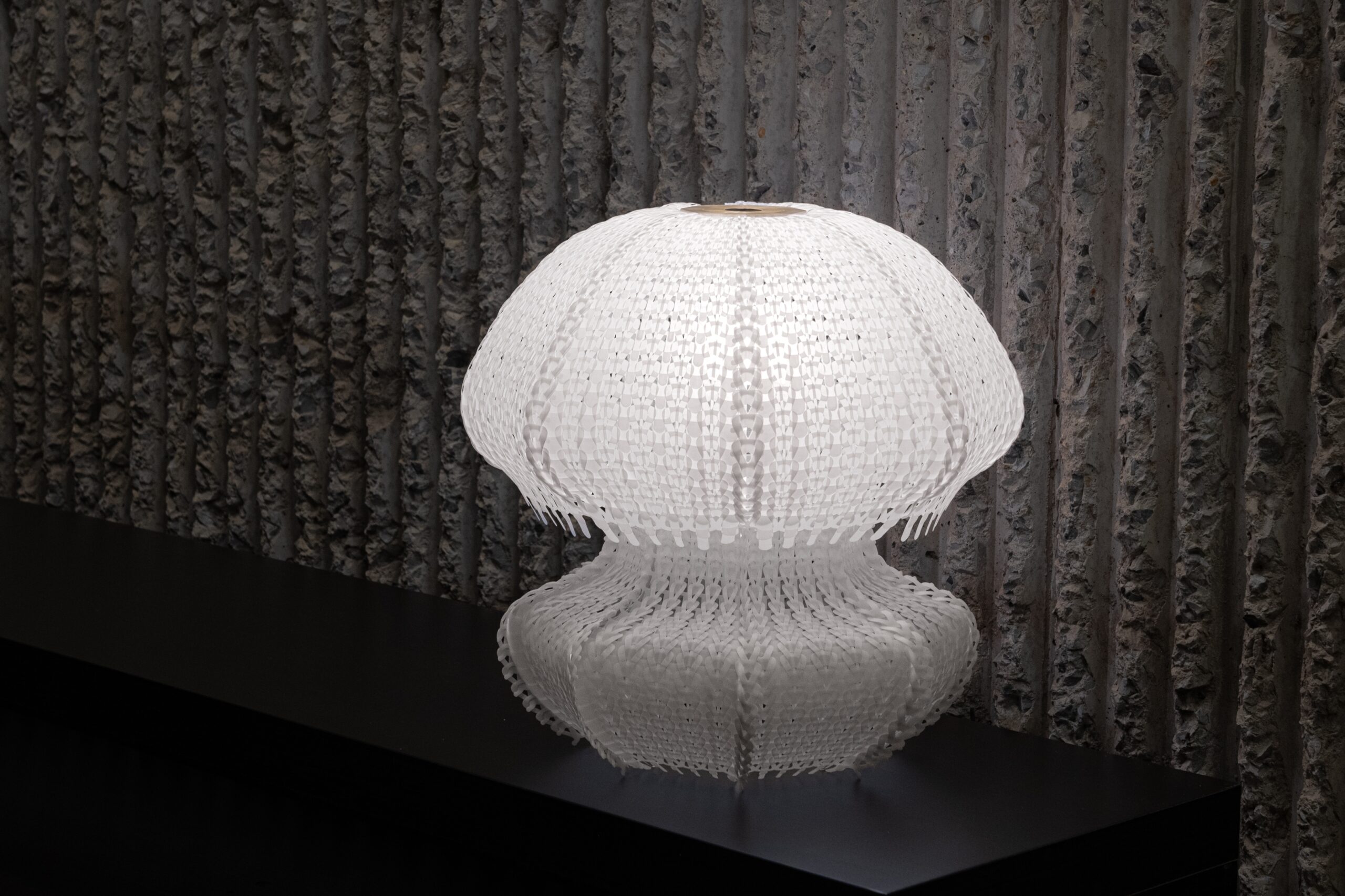
On the matter of safety and durability, several considerations are necessary. Polyethylene is not permanently resistant to heat or ultraviolet radiation; under prolonged exposure to light or higher temperatures, it may discolor or deform. For a lamp illuminated from within, heat management must be addressed to ensure that color and structure remain stable over time and to prevent the risks that come with close contact between the light source and the plastic. High-efficiency LEDs with low heat emission, along with internal reflectors or spacers, would be practical solutions. The design would also benefit from modular electrical components to enable maintenance and replacement, extending the lifespan of the product.
From a production standpoint, the project clearly demonstrates the tension between prototype and scalability. The hybrid of digital fabrication and manual assembly preserves the crafted quality and production trace, but it also highlights the time and cost limitations of limited-series manufacturing. For a shift toward wider production, the processes of pressing, cutting, and assembly would need to be redefined to reduce labor while preserving the visual language. Structural connections could be redesigned for lockable or modular joints, allowing easier assembly, part replacement, and improved efficiency without undermining the tactile identity.
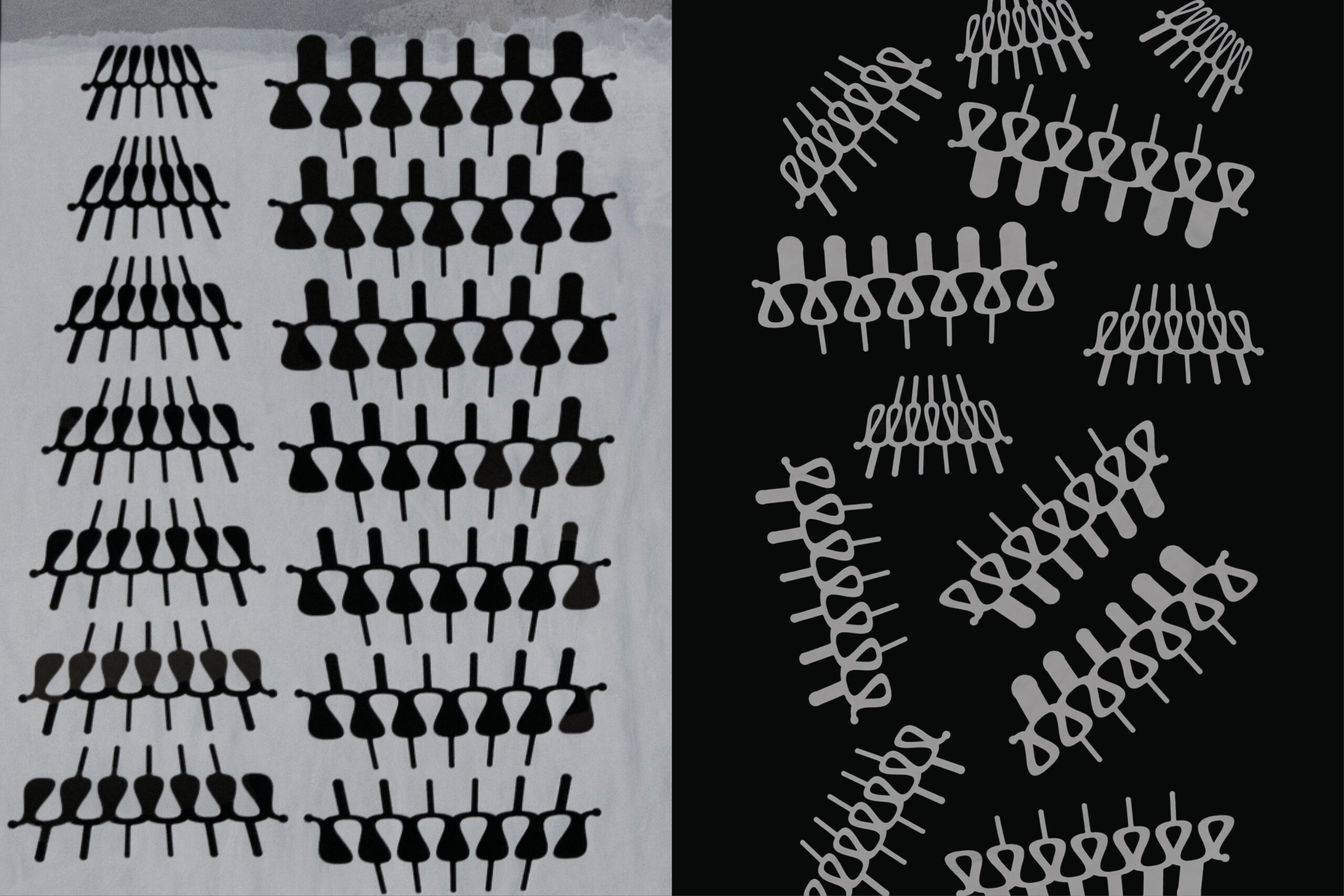
In terms of sustainability, the project achieves a significant merit by reintroducing a harmful, ubiquitous material into a new cycle and conveying a message that is immediately graspable. However, for environmental claims to be fully substantiated, real measurements are needed: the actual volume of plastic used per lamp, the energy cost of pressing and heating, and the end-of-life path of the product. Without these metrics, a viewer may be convinced by the aesthetics yet still question the broader environmental impact regarding energy use and final recyclability.
One essential aspect of the lighting design that deserves attention is the readability and quality of color rendering. The choice of spectrum and color rendering index can strengthen the project’s narrative. Spectrums leaning toward cool tones evoke associations with marine bioluminescence, while warmer tones feel more comfortable in domestic interiors. Allowing users to adjust color temperature and light intensity would transform the lamp from a single-expression piece into a versatile object and elevate its functional value.
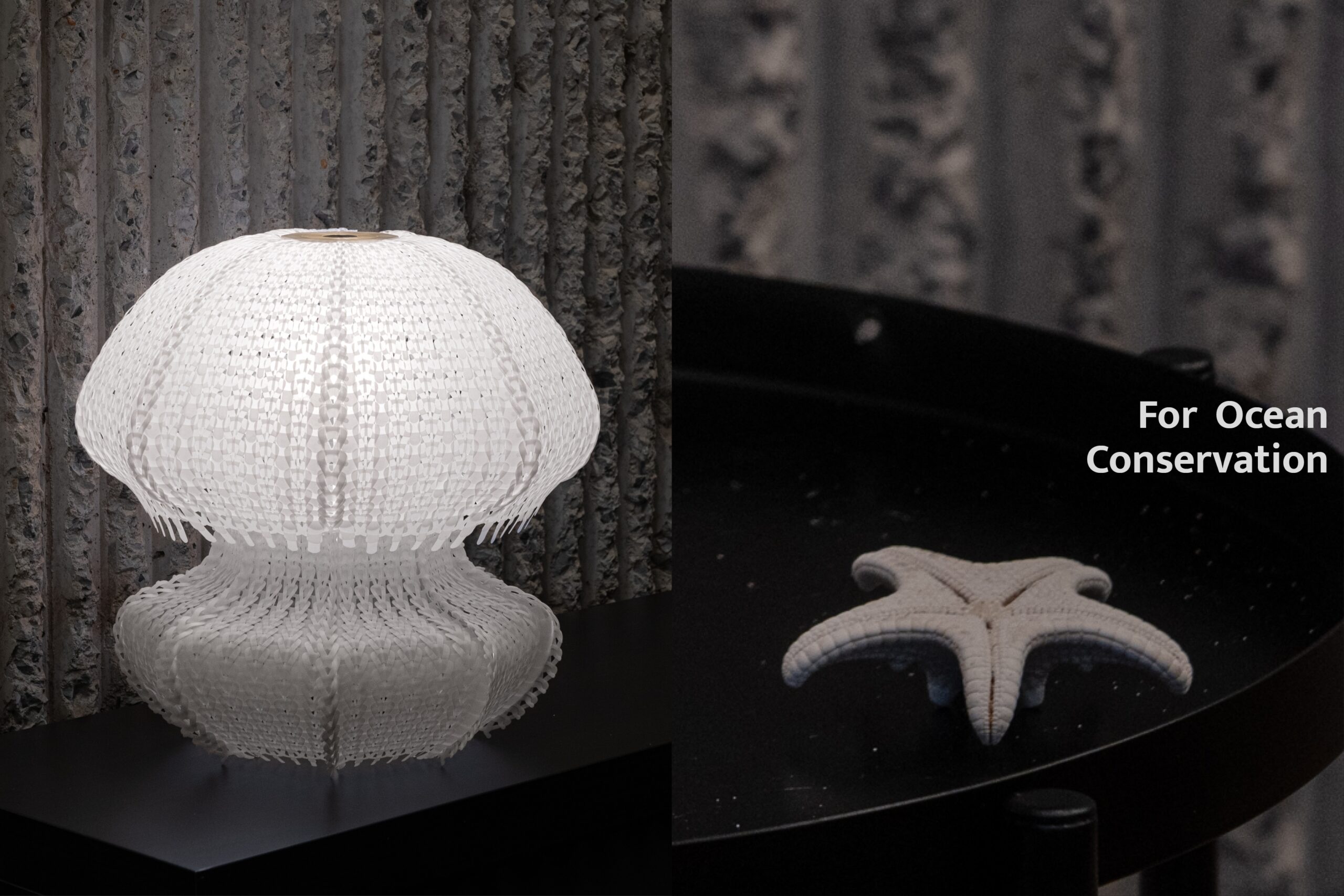
Finally, there are several practical improvements that could extend durability and acceptance in the market: reinforcing connection points with mechanical locks, adding UV-stabilizing layers or additives during pressing, using replaceable LED modules, and including clear labeling on maintenance and safety guidelines. These changes might increase upfront production costs but would significantly improve longevity and ensure that the environmental message embedded in the design continues to resonate over time.
In conclusion, Polycycle Illumination is a project that effectively leverages narrative and manages to align form and material with conceptual clarity. It builds an active bridge between ecological awareness and aesthetic presence, inviting users into contemplation. To elevate its visual success into a truly enduring and scalable design, greater attention to heat and light management, production feasibility, and life-cycle transparency would be essential, ensuring that its sustainability promise moves beyond the symbolic into the demonstrably tangible.
